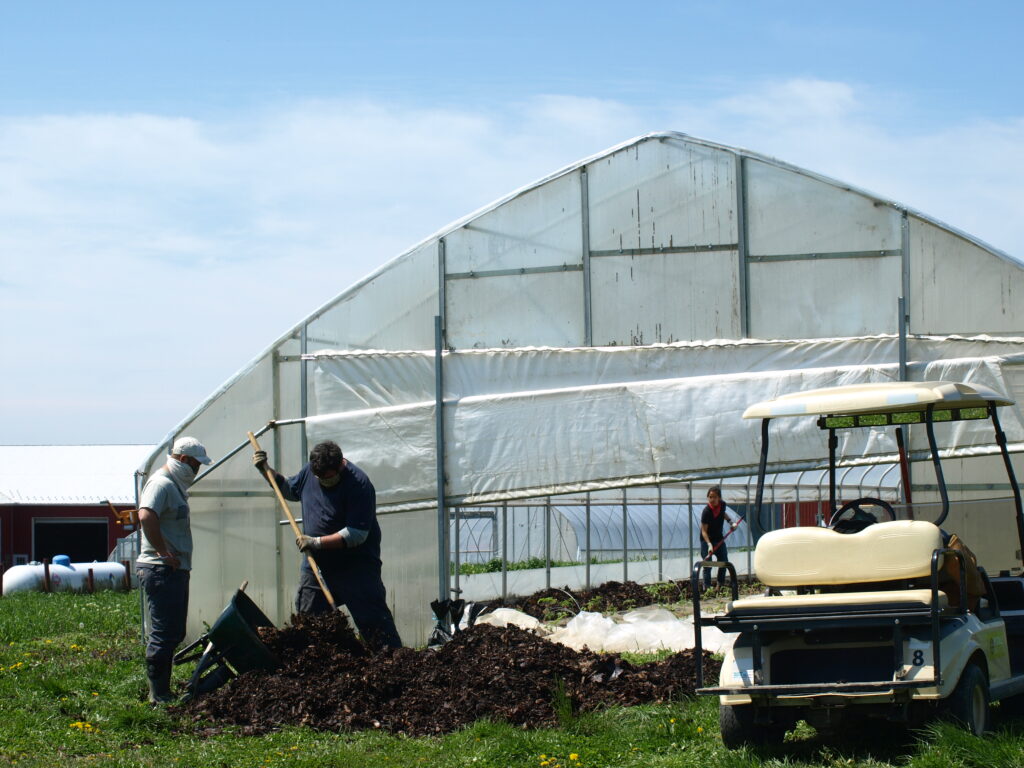Replacing some inputs with those produced naturally on the farm
There’s no doubt that farmers have a lot more tools at their disposal to manage soil fertility, pests and disease today than they did 30 years ago. The unfortunate thing is that having so many tools has helped obscure the fact that the more basic elements of a naturally cycling system are still the most effective way to produce healthy crops.
At Rodale Institute, when we meet with farmers across the country, we take a broad look at their entire farm system. We look at soil test results, buffer zones, crop rotation, tillage practices and available equipment, and we use that information to help us make informed decisions about how to implement holistic improvements.
But one of the documents we’re receiving more and more often when visiting a farm for the first time is a long, long list of inputs. On some conventional farms, these inputs make sense given the system in which they operate — if you plant Roundup Ready soybeans, success is contingent upon the application of herbicide and maybe an adjuvant or a pesticide.
But among organic, transitioning and regenerative farmers, or farmers using those practices to market to their consumers, the list of inputs used should theoretically be smaller, since they should be relying on natural systems to fix nutrients, balance the population of pests and beneficials, and produce healthy plants that resist disease. It’s increasingly common for our consultants to receive a list of (sometimes extremely expensive) inputs for crop rotations that just don’t require them.
Overall, the volume and variety of products available has been a boon to organic farmers who want to use more targeted, precision technologies to treat specific issues. The Organic Materials Review Institute (OMRI) products list, which provides an exceptionally helpful database of all products that are allowable for use in certified organic systems, only listed around 2,000 products in 2010. Today it includes over 8,000.
We’ve learned a lot more about disease pathways, pest lifecycles and plant microbial interactions in that timeframe — all of which are exceptionally positive developments in agricultural production. But unfortunately, the increase in the number of products that make unverifiable claims has also increased. It’s not that they’re necessarily fraudulent or non-compliant; it’s that there hasn’t always been a rigorous testing regimen applied to their use on farms.

There are several other reasons why purchasing dozens of inputs isn’t always the best choice — compared to using one’s own on-farm inputs. One is obviously the associated cost. It’s difficult to see farmers spending small fortunes on inputs without a clear justification for what they’re meant to accomplish; this is why we always work to try and trim the list down when appropriate.
Another reason is that heavily input-based operations are largely inconsistent with the typical consumer’s perception of an organic system — and rightfully so. The manufacturing and shipping of these inputs incurs carbon emissions, which can sometimes even compete with the externalized costs of conventional farms, if the list of inputs is long enough. How are we really improving agriculture if we’re shipping dozens of products from several different manufacturers to one farm every single season?
Yet another reason is the dependence these input-heavy systems may create. If a grower requires inputs to produce a healthy yield, what if one of them goes off the market? How will they adapt the system if something isn’t readily available — or more likely, if the supply chain is disrupted for a significant length of time? A nutrition management system should not require a large number of inputs year after year — improving soil health should mean fewer inputs over time.
Before you purchase an input, it’s important to ask yourself, “Am I buying this because I heard that it’s popular? Have I done my due diligence in exploring the active ingredients and feel confident in the data provided on the label claims? Have I talked to any other growers about it?”
Processed animal-based inputs can be a great way to supplement your cash-crop rotation, to apply via side-dress techniques or to target specific fertility issues. It’s also important to remember that raw manure can usually be obtained at a reasonable price (plus shipping) and will provide myriad benefits to soil and subsequent cash crops. To be more methodical with manure application, get a manure analysis performed on your source, don’t create a situation where spreading manure becomes an environmental hazard, and then use it in a targeted way by understanding what your total macronutrient contribution to the system will be.
Overall, the increase in products and technology available to organic, transitional and the greater farming community today is a good thing. There are plenty of companies that produce inputs that are perfectly reasonable and valuable in organic and transitioning systems. We don’t endorse any specific product, but we do sometimes recommend tools to farmers that we know work properly or that have made data available for our review.
Be critical of the inputs you’re considering using, and when in doubt, stick to the core tenets of improving soil health: cover cropping, compost or manure application, crop rotation, grazing and reducing tillage.
Sam Malriat is the Director of the Organic Consulting program at the Rodale Institute in Kutztown, Pennsylvania. Farmers interested in transitioning their land to organic can contact Rodale Institute’s Organic Crop Consulting Services to get started. Reach out at Consulting@RodaleInstitute.org or 610-683-1416.
















